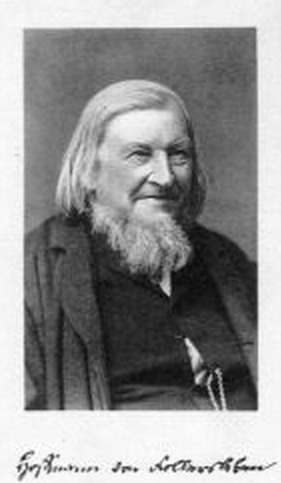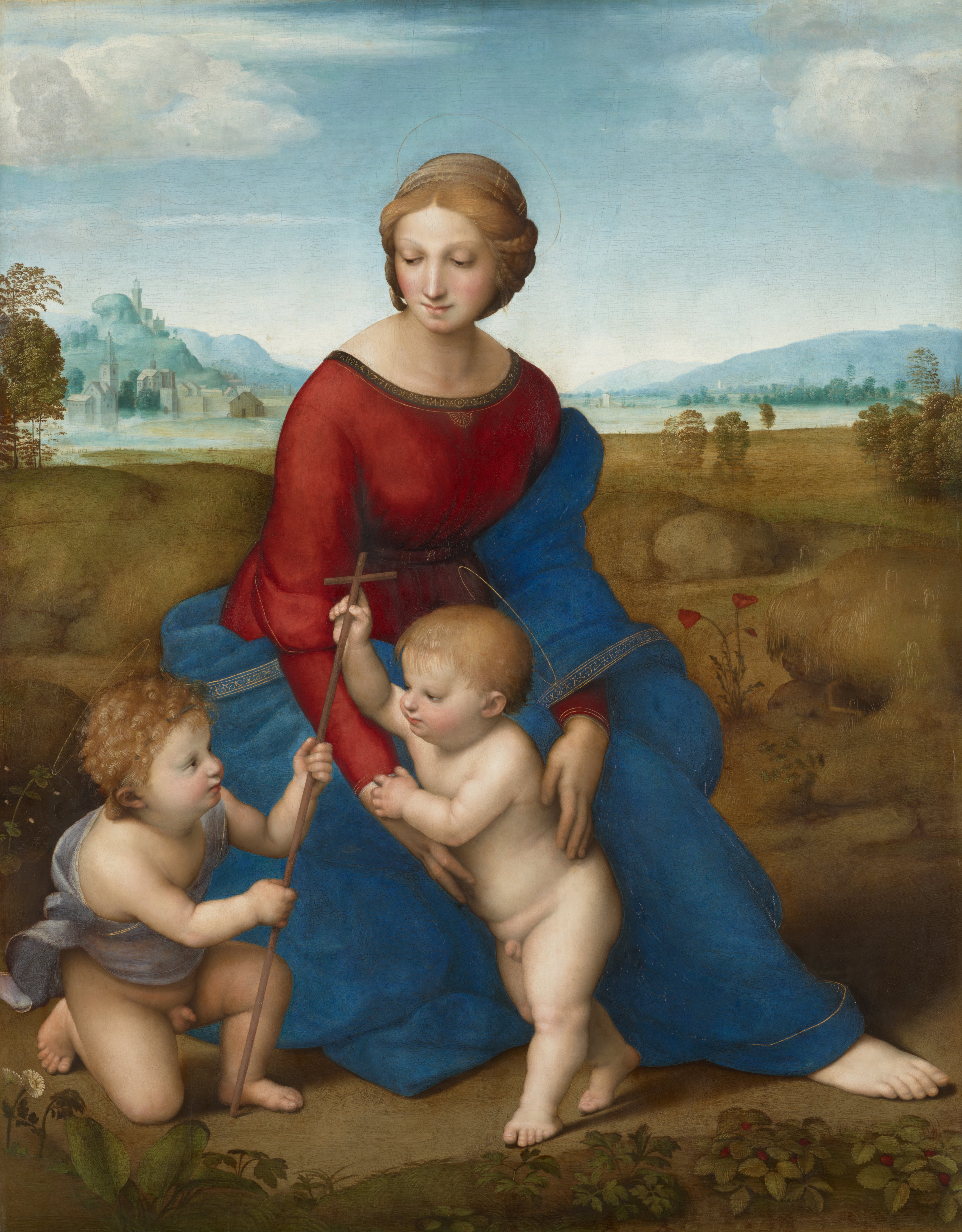|
Franz Bauer (sculptor)
Franz Bauer (1798, Vienna - 14 March 1872, Vienna) was an Austrian sculptor in the late Classicism, Classical style. Life and work From 1814, he studied at the Academy of Fine Arts, Vienna, with Johann Nepomuk Schaller then, after 1815, worked in the studios of Josef Klieber. A travel grant enabled him to study in Rome, where he worked with Bertel Thorvaldsen. He returned to Vienna in 1842 and taught at the Academy. He was appointed a Professor at the preparatory school in 1852 and, from 1865, headed the general sculpture school. His best known students included Carl Kundmann, Antonín Pavel Wagner, Johannes Benk, Rudolf Weyr and Viktor Oskar Tilgner. Selected works * Pieta (marble), Kunsthistorisches Museum, 1841/1842 * St. Ferdinand, niche figure, Johann Nepomuk Church, 1844 * Saintly figure on the portal of the , c.1858 Source Biography by W. Krause @ the ''Österreichisches Biographisches Lexikon'' 1798 births 1872 deaths Austrian sculptors Academic staff of t ... [...More Info...] [...Related Items...] OR: [Wikipedia] [Google] [Baidu] |
Vienna Knight (13003969123)
Vienna ( ; german: Wien ; bar, Wean, label=Bavarian language, Austro-Bavarian ) is the Capital city, capital, largest city, and one of States of Austria, nine states of Austria. Vienna is Austria's List of cities and towns in Austria, most populous city and its primate city, with about two million inhabitants (2.9 million within the metropolitan area, nearly one third of the country's population), and its Culture of Austria, cultural, Economy of Austria, economic, and Politics of Austria, political center. It is the Largest cities of the European Union by population within city limits, 6th-largest city proper by population in the European Union and the largest of all List of cities and towns on Danube river, cities on the Danube river. Until the beginning of the 20th century, Vienna was the largest German language, German-speaking city in the world, and before the splitting of the Austria-Hungary, Austro-Hungarian Empire in World War I, the city had two million inhabitants. To ... [...More Info...] [...Related Items...] OR: [Wikipedia] [Google] [Baidu] |
Johannes Benk
Johannes Benk (27 July 1844, in Vienna – 12 March 1914, in Vienna) was an Austrian monumental sculptor. Biography His father, János Benk (1814–1895), was a decorative sculptor and stonemason from Osijek. After completing his primary education, he studied with the sculptor, Franz Bauer, then went to Dresden, where he studied at the Academy of Fine Arts with Ernst Julius Hähnel. He participated in several competitions for monumental sculpture, gaining notice with his designs for statues of Wilhelm von Tegetthoff, Beethoven and the Empress Maria Theresa, although none of those designs were realized. In 1862, the Academy awarded him its Gundel-Prize for excellence. A scholarship enabled him to study in Rome and Florence from 1870 to 1871. Upon returning, he opened a studio in his father's home. He soon became popular and attracted a notable patron; Baron Karl von Hasenauer. His major works include a group of allegorical statues, representing Austria, for the staircase at th ... [...More Info...] [...Related Items...] OR: [Wikipedia] [Google] [Baidu] |
Austrian Sculptors
Austrian may refer to: * Austrians, someone from Austria or of Austrian descent ** Someone who is considered an Austrian citizen, see Austrian nationality law * Austrian German dialect * Something associated with the country Austria, for example: ** Austria-Hungary ** Austrian Airlines (AUA) ** Austrian cuisine ** Austrian Empire ** Austrian monarchy ** Austrian German (language/dialects) ** Austrian literature ** Austrian nationality law ** Austrian Service Abroad ** Music of Austria ** Austrian School of Economics * Economists of the Austrian school of economic thought * The Austrian Attack variation of the Pirc Defence chess opening. See also * * * Austria (other) * Australian (other) * L'Autrichienne (other) is the feminine form of the French word , meaning "The Austrian". It may refer to: *A derogatory nickname for Queen Marie Antoinette of France *L'Autrichienne (film), ''L'Autrichienne'' (film), a 1990 French film on Marie Antoinette wit ... [...More Info...] [...Related Items...] OR: [Wikipedia] [Google] [Baidu] |
1872 Deaths
Year 187 ( CLXXXVII) was a common year starting on Sunday (link will display the full calendar) of the Julian calendar. At the time, it was known as the Year of the Consulship of Quintius and Aelianus (or, less frequently, year 940 ''Ab urbe condita''). The denomination 187 for this year has been used since the early medieval period, when the Anno Domini calendar era became the prevalent method in Europe for naming years. Events By place Roman Empire * Septimius Severus marries Julia Domna (age 17), a Syrian princess, at Lugdunum (modern-day Lyon). She is the youngest daughter of high-priest Julius Bassianus – a descendant of the Royal House of Emesa. Her elder sister is Julia Maesa. * Clodius Albinus defeats the Chatti, a highly organized German tribe that controlled the area that includes the Black Forest. By topic Religion * Olympianus succeeds Pertinax as bishop of Byzantium (until 198). Births * Cao Pi, Chinese emperor of the Cao Wei state (d. 226) * G ... [...More Info...] [...Related Items...] OR: [Wikipedia] [Google] [Baidu] |
1798 Births
Events January–June * January – Eli Whitney contracts with the U.S. federal government for 10,000 muskets, which he produces with interchangeable parts. * January 4 – Constantine Hangerli enters Bucharest, as Prince of Wallachia. * January 22 – A coup d'état is staged in the Netherlands ( Batavian Republic). Unitarian Democrat Pieter Vreede ends the power of the parliament (with a conservative-moderate majority). * February 10 – The Pope is taken captive, and the Papacy is removed from power, by French General Louis-Alexandre Berthier. * February 15 – U.S. Representative Roger Griswold (Fed-CT) beats Congressman Matthew Lyon (Dem-Rep-VT) with a cane after the House declines to censure Lyon earlier spitting in Griswold's face; the House declines to discipline either man.''Harper's Encyclopaedia of United States History from 458 A. D. to 1909'', ed. by Benson John Lossing and, Woodrow Wilson (Harper & Brothers, 1910) p171 * March &ndas ... [...More Info...] [...Related Items...] OR: [Wikipedia] [Google] [Baidu] |
Kunsthistorisches Museum
The Kunsthistorisches Museum ( "Museum of Art History", often referred to as the "Museum of Fine Arts") is an art museum in Vienna, Austria. Housed in its festive palatial building on the Vienna Ring Road, it is crowned with an octagonal dome. The term ''Kunsthistorisches Museum'' applies to both the institution and the main building. It is the largest art museum in the country and one of the most important museums worldwide. Emperor Franz Joseph I of Austria-Hungary opened the facility around 1891 at the same time as the Natural History Museum, Vienna which has a similar design and is directly across Maria-Theresien-Platz. The two buildings were constructed between 1871 and 1891 according to plans by Gottfried Semper and Baron Karl von Hasenauer. The emperor commissioned the two Ringstraße museums to create a suitable home for the Habsburgs' formidable art collection and to make it accessible to the general public. The buildings are rectangular in shape, with symmetrical ... [...More Info...] [...Related Items...] OR: [Wikipedia] [Google] [Baidu] |
Viktor Oskar Tilgner
Viktor Oskar Tilgner (25 October 1844 in Pressburg – 16 April 1896 in Vienna) was an Austrian sculptor and medailleur. Life He was the son of Captain Carl Tilgner. The family moved to Vienna when he was a child. His talent was recognized early by the sculptor , who became his first teacher. Then, at the Academy of Fine Arts, he studied under Franz Bauer and Josef Gasser. Later, he was attracted to engraving and worked with the medailleur . One of Tilgner's student's was German sculptor John Walz. He belonged to the circle of artists around Count Karol Lanckoroński. During the World Exhibition of 1873, he met the French sculptor Gustave Deloye, who strongly influenced his work. The following year, he took a trip to Italy with Hans Makart, whose "realistic academicism" also influenced Tilgner's style. For the last twenty years of his life, he had a large studio in what was originally a greenhouse at the Palais Schwarzenberg. Despite a long-standing heart condition an ... [...More Info...] [...Related Items...] OR: [Wikipedia] [Google] [Baidu] |
Rudolf Weyr
Rudolf Weyr, from 14 May 1911, Rudolf Ritter von Weyr (22 March 1847, Vienna - 30 October 1914, Vienna) was an Austrian sculptor in the Neo-Baroque style. Life He studied under Franz Bauer and Josef Cesar and was employed by the latter for many years. In 1875, he was contracted by Gottfried Semper and Carl Hasenauer to assist them with their work on the Kunsthistorisches Museum. In 1879, under the direction of Hans Makart, he designed table settings and other decorative pieces for the Emperor's Silver Wedding Anniversary. From the late 1880s, he worked alone and created some of the most important figures that adorn the Ringstraße. In his later years, Weyr suffered from arteriosclerosis and died of heart failure induced by pneumonia. He was buried in the Döbling Cemetery. In 1919, a street in Landstraße was named the ''Weyrgasse'' in his honor. Major works * 1884: Gable statues at the Hermesvilla * 1888: Spandrel figures in the windows at the Burgtheater * 1889: G ... [...More Info...] [...Related Items...] OR: [Wikipedia] [Google] [Baidu] |
Antonín Pavel Wagner
Antonín Pavel Wagner (3 July 1834, Dvůr Králové nad Labem – 27 January 1895, Vienna) was a Czech sculptor who spent most of his career in Vienna. Life and work His family was involved in the textile industry. After completing secondary school, he entered the firm of Adolf Dittrich, a canvas merchant in Prague, to learn the trade. In his free time, he painted and drew. In 1851, he left to study with the sculptor, Josef Max. He spent six years in his studio as an assistant; working on commissions in Hradec Králové, Kutná Hora, and his hometown.Vilém Weitenweber, "Antonín Wagner", in: ''Světozor'', Vol.17 #7, 1883,Online In 1857, he moved to Vienna, where he enrolled at the Academy of Fine Arts and studied with Franz Bauer. During his time there, he received three awards; one for a fountain in front of the Mariahilfer Kirche. In 1868, he took an extended study trip through Germany, Dalmatia and Italy. Although he came to enjoy great respect in the artistic community, h ... [...More Info...] [...Related Items...] OR: [Wikipedia] [Google] [Baidu] |




